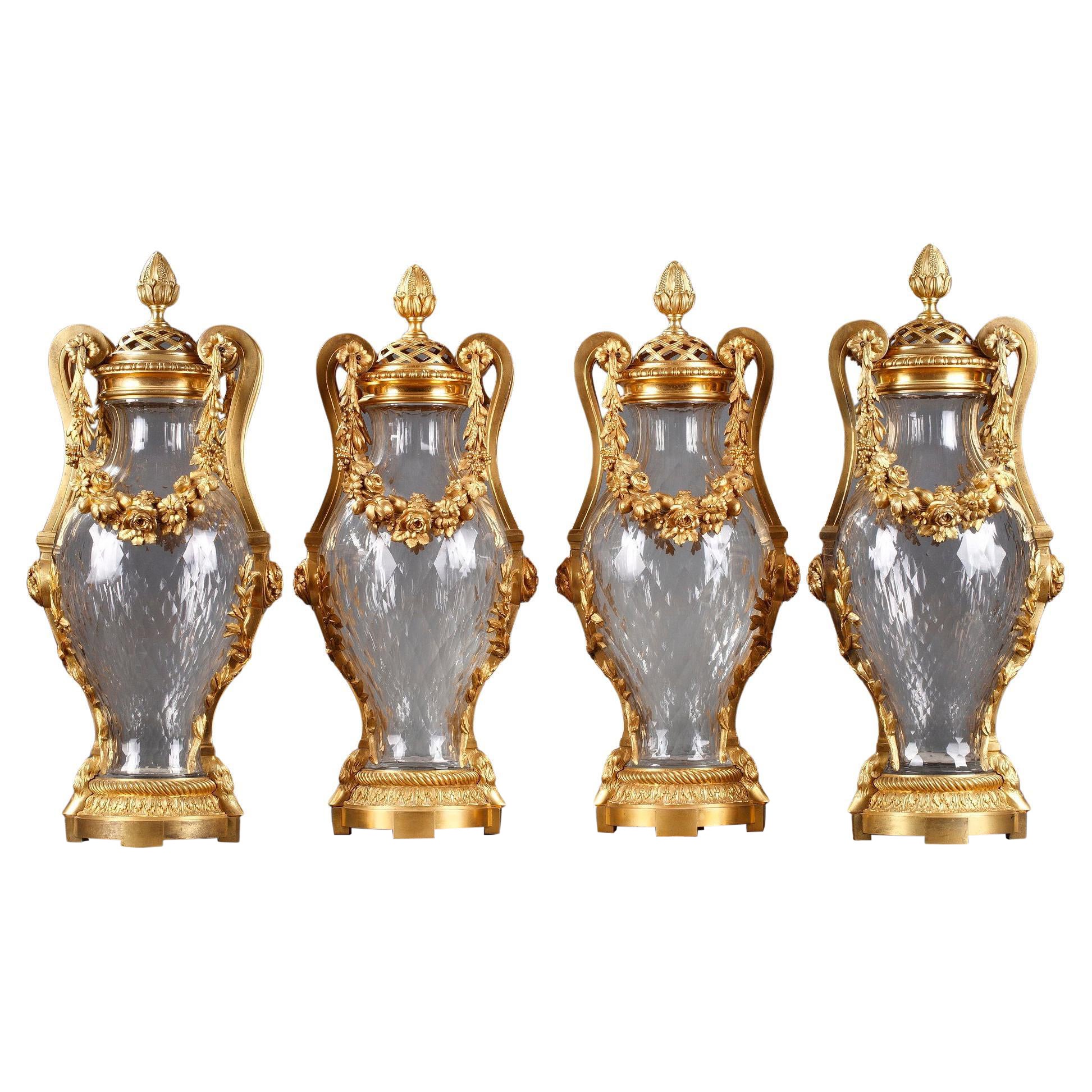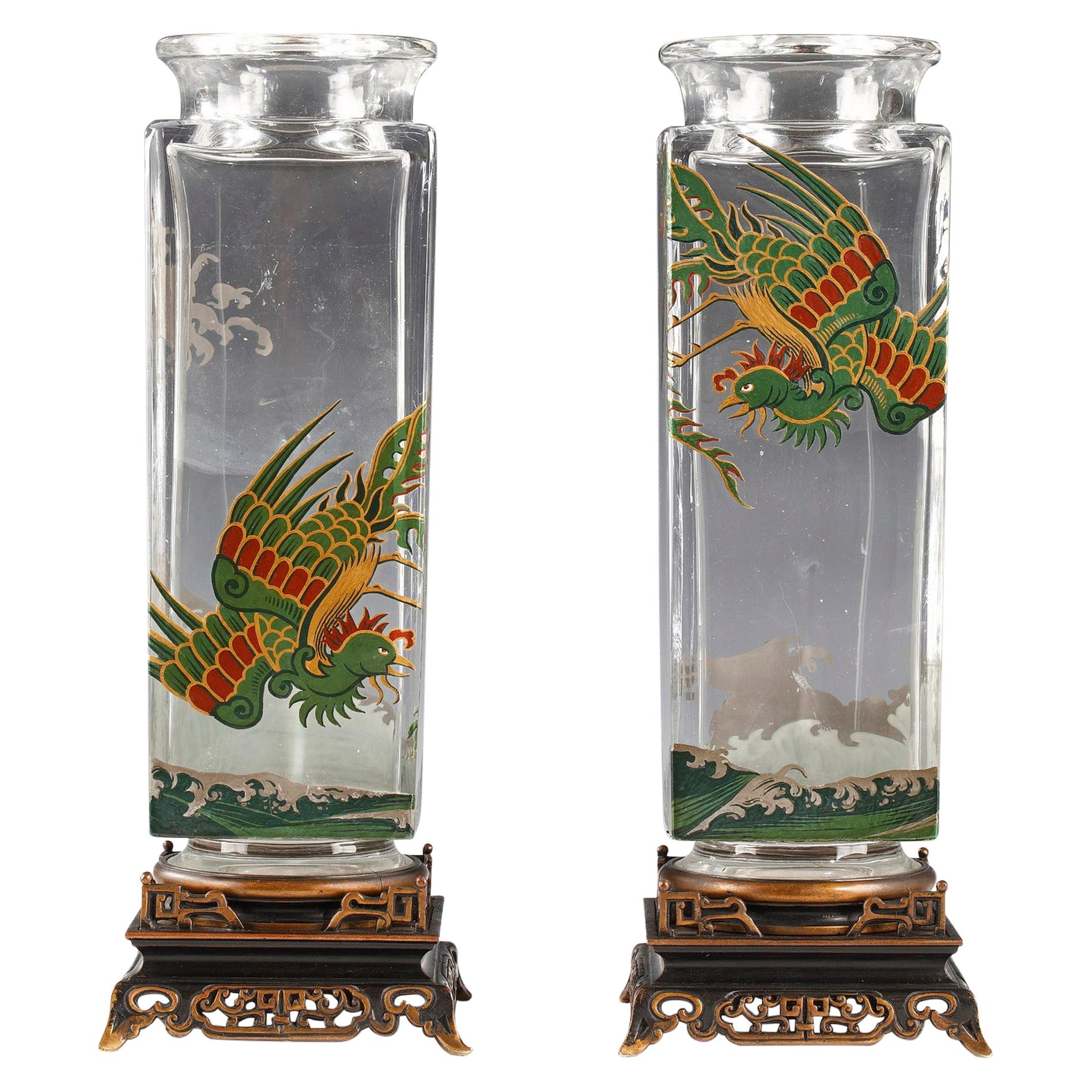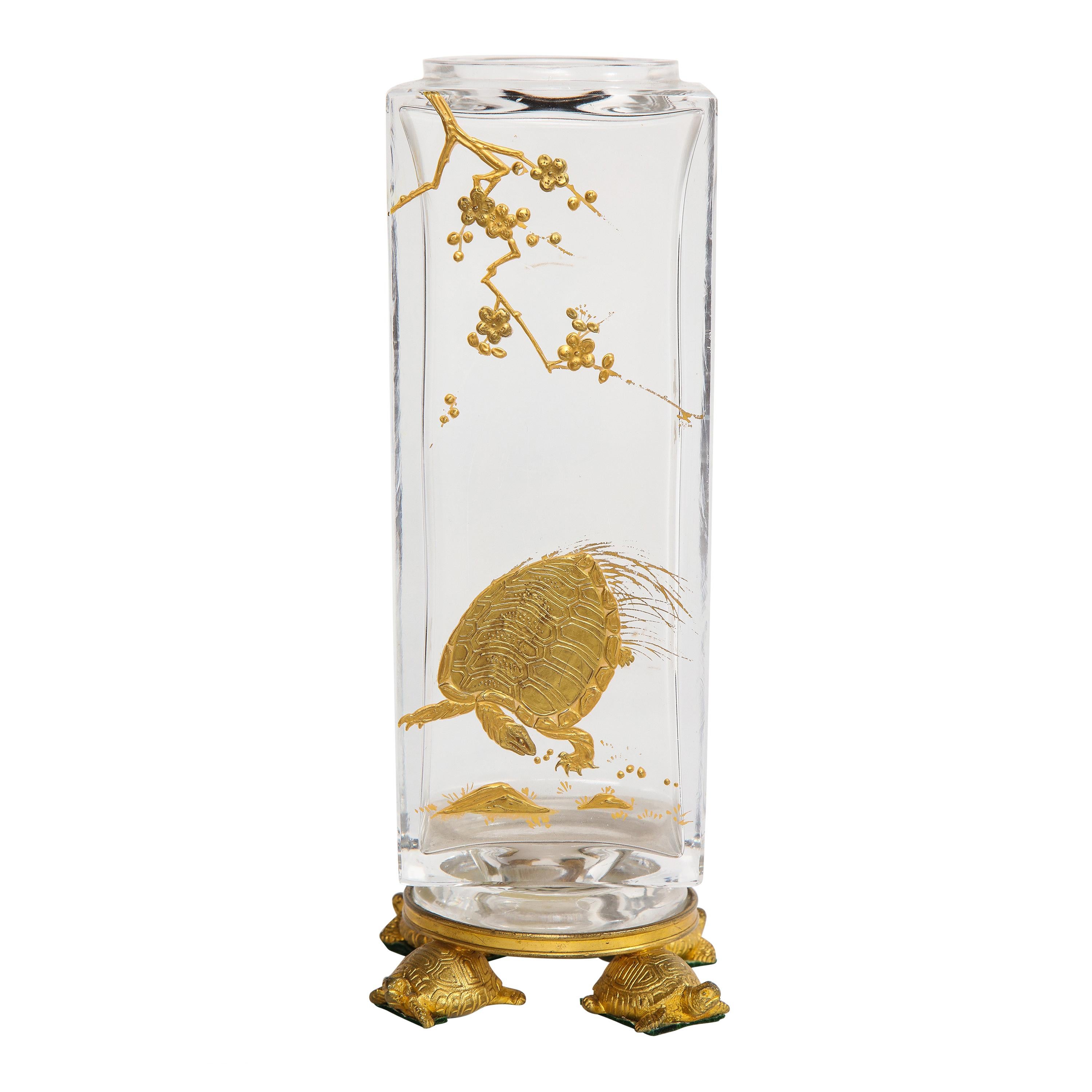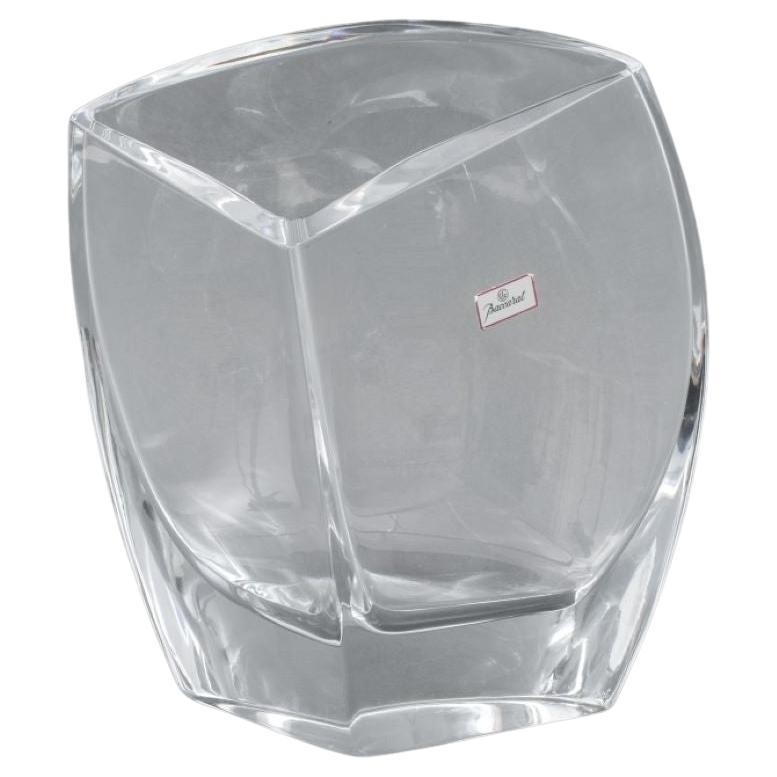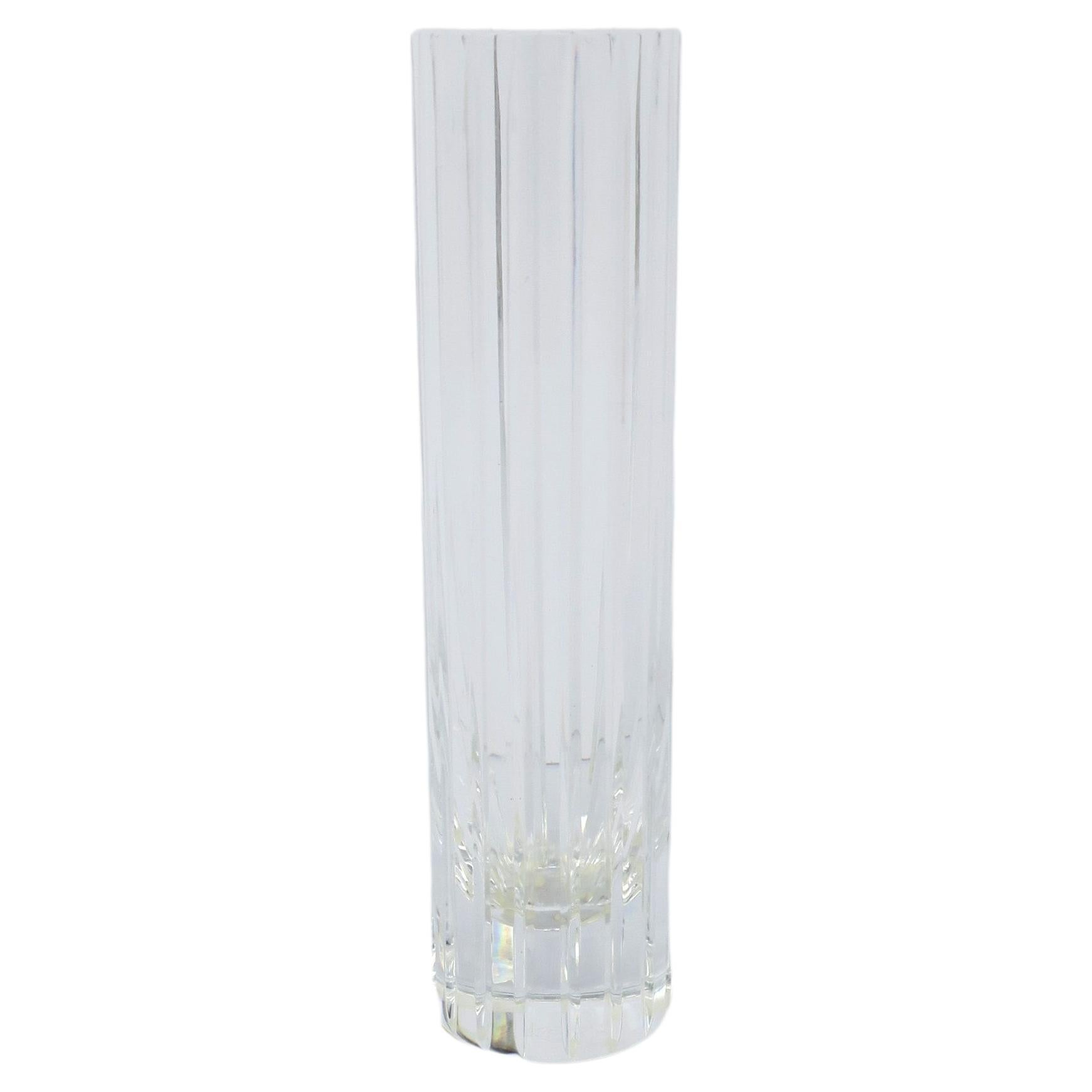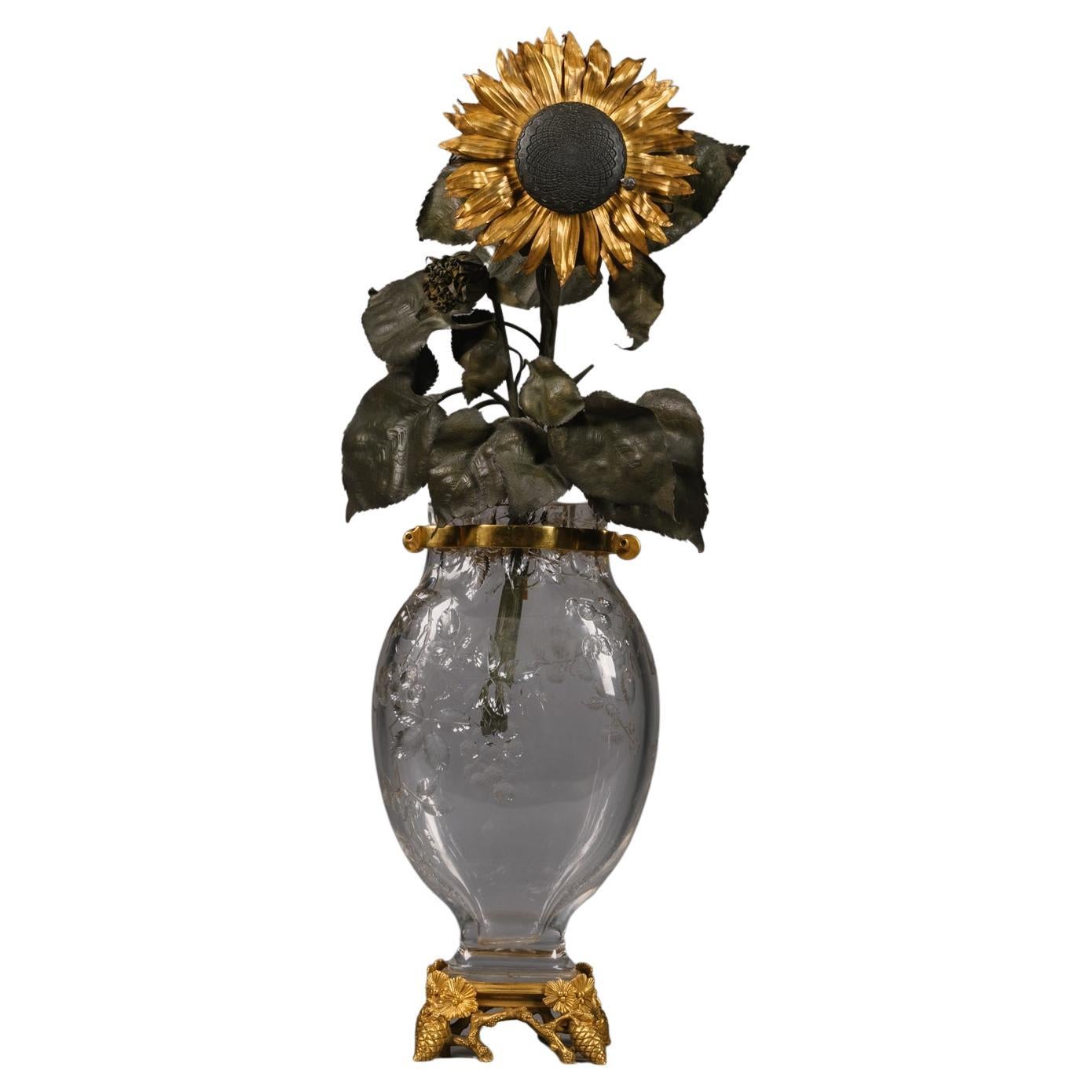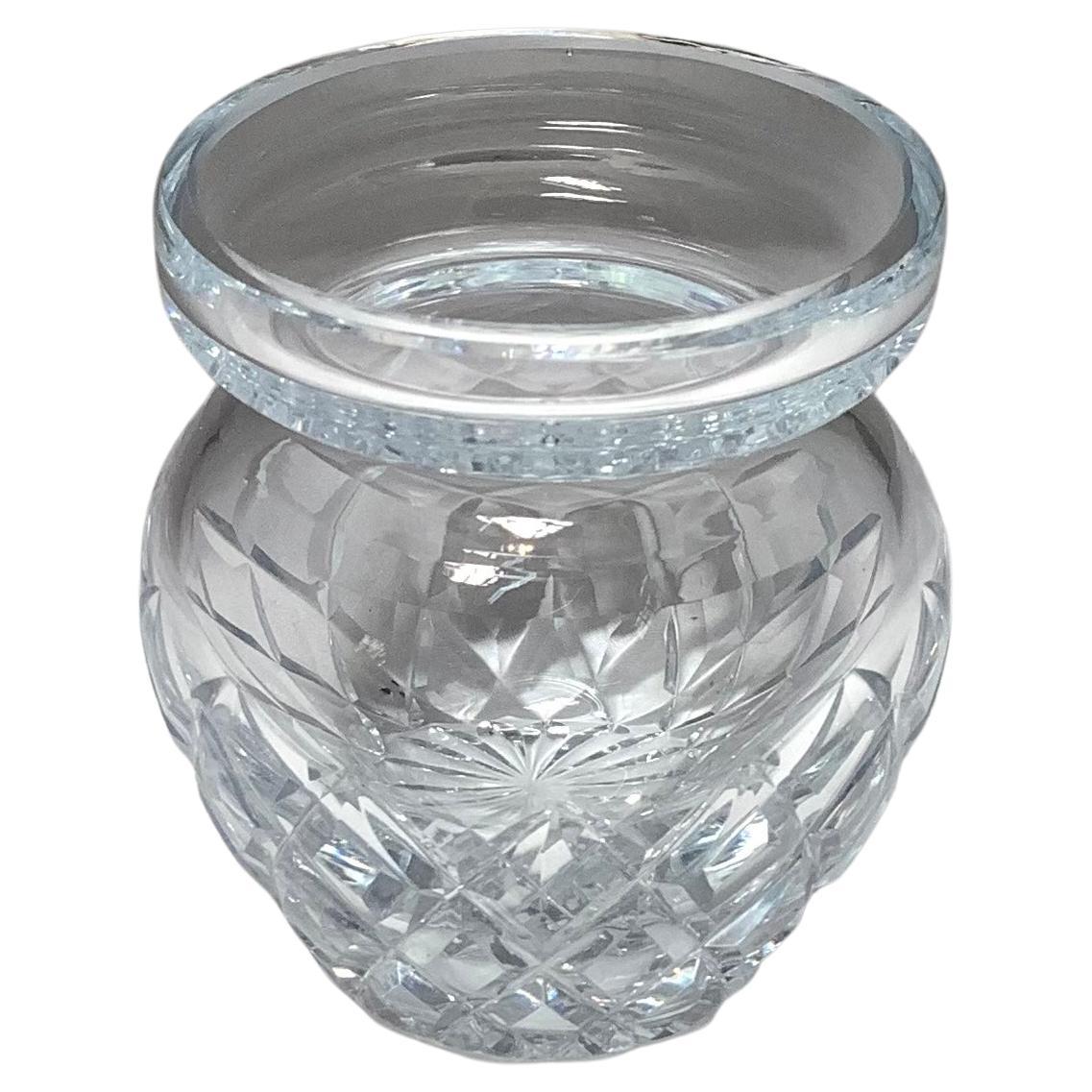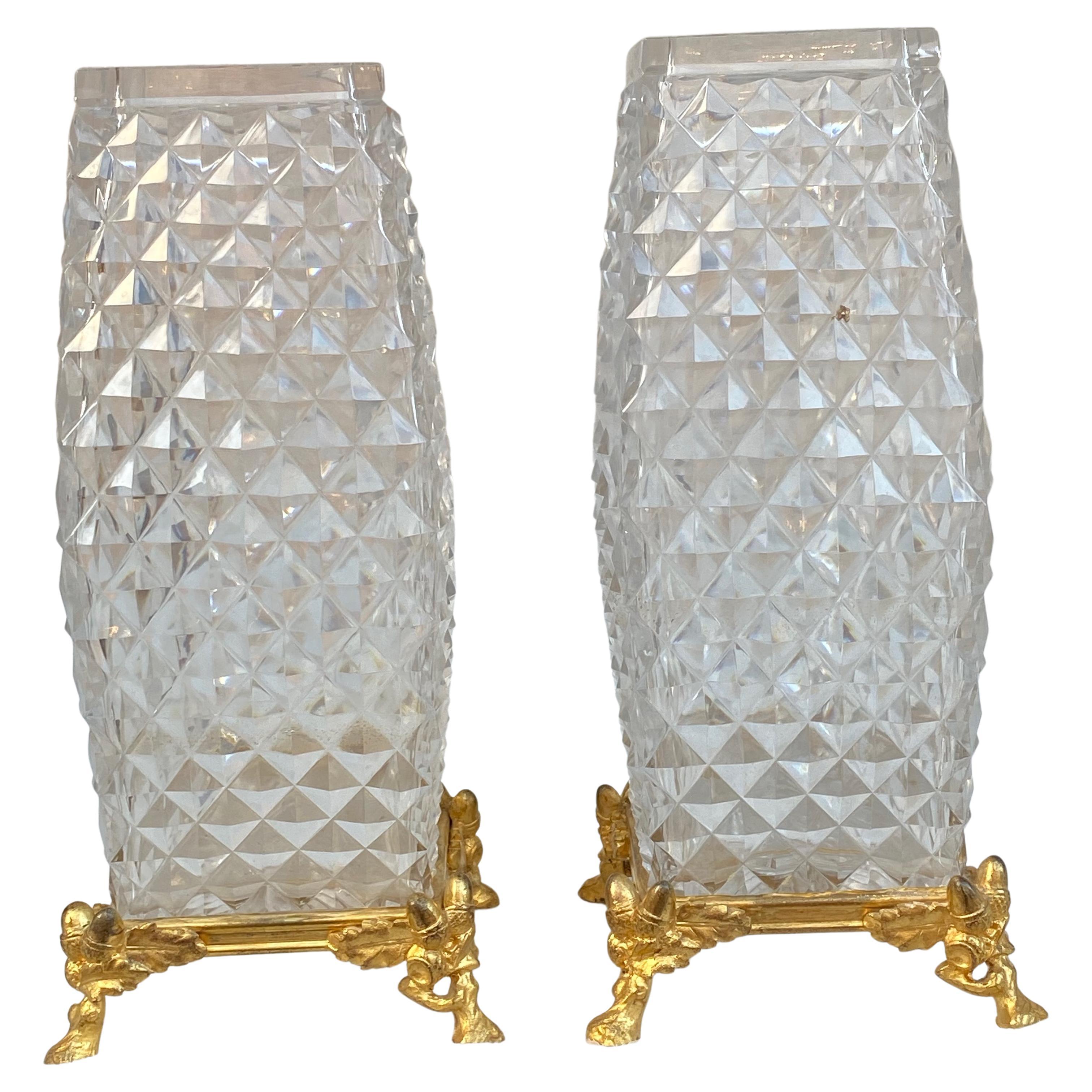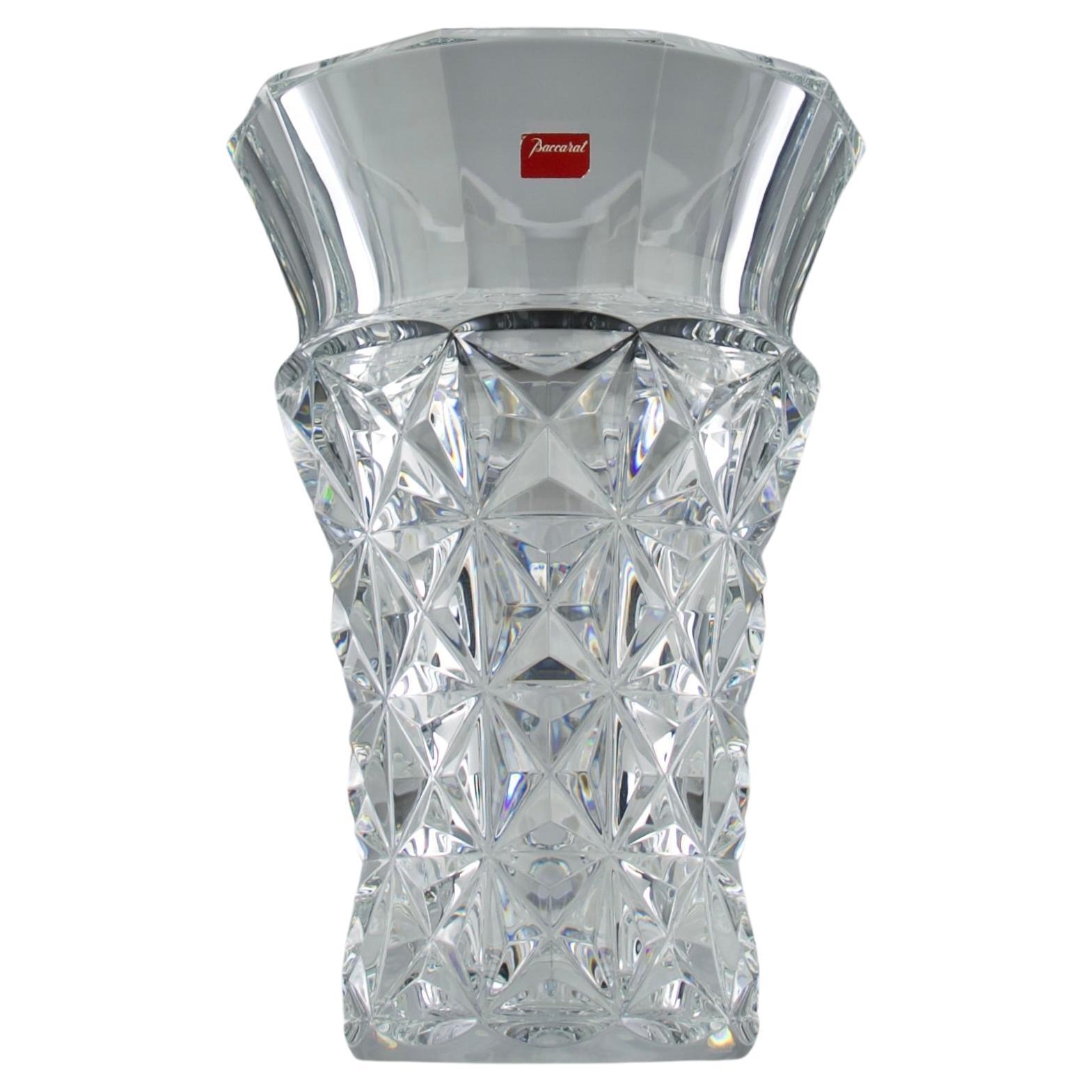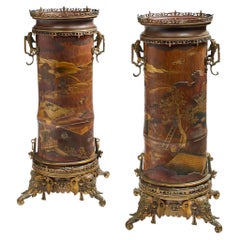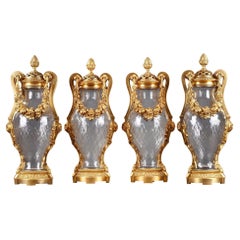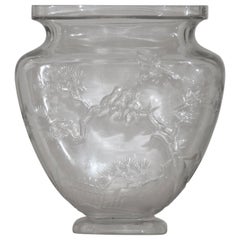
Maison Baccarat Japonisme Crystal Vase, circa 1880
View Similar Items
Want more images or videos?
Request additional images or videos from the seller
1 of 9
Maison Baccarat Japonisme Crystal Vase, circa 1880
About the Item
- Attributed to:Baccarat (Manufacturer)
- Dimensions:Height: 7.49 in (19 cm)Width: 6.7 in (17 cm)Depth: 2.76 in (7 cm)
- Style:Japonisme (Of the Period)
- Materials and Techniques:
- Place of Origin:
- Period:
- Date of Manufacture:circa 1880
- Condition:Wear consistent with age and use.
- Seller Location:Saint-Ouen, FR
- Reference Number:1stDibs: LU261237153453
About the Seller
4.9
Vetted Seller
These experienced sellers undergo a comprehensive evaluation by our team of in-house experts.
1stDibs seller since 2017
55 sales on 1stDibs
Typical response time: 1 hour
More From This SellerView All
- Theodore Deck '1823-1891', a Japonisme Polychromed Faience Quadrangular VaseBy Theodore DeckLocated in Saint-Ouen, FRTheodore Deck (1823-1891) A Polychromed Faience quadrangular vase, decorated in a cartouche with butterfly and birds on branches of prunus and peonies in the Japanese Taste on a pu...Category
Antique Late 19th Century French Japonisme Vases
MaterialsFaience
- French 19th Century Pair of Lacquered Bamboos Japonisme VasesBy Edouard Lievre, Ferdinand BarbedienneLocated in Saint-Ouen, FRA 19th French century pair of Lacquered Bamboos Japonisme vases. An amazing pair of tall cylindrical bamboo vases decorated in Japanese Gold and Sil-ver Hiramaki-E Lacquer with Pavilions in The Mist and Weaving Figures, Flown Over by a Pair of Cranes. Enclosed in a Sino-Japanese Inspiration Golden and Brown Patina Bronze Mount Featuring Elephant Heads, Partially Openwork Branches and Salamanders Forming Side Handles. Circa 1870 Attributed to Édouard Lièvre (1828-1886) and Ferdinand Barbedienne (1810-1892) Édouard Lièvre (1828-1886) is one of the most talented and prolific designer and industrialist of the 19th Century, his repertoire is sometimes Sino-Japanese or Neo-Renaissance, whether in furniture or works of art, we can note in particular the parade bed of Valtesse de La Bigne, furniture commissioned by the painter Édouard Detaille or even Sarah Bernhardt, and the famous works in collaboration with Maison Christofle or those in gilded bronze and cloisonné enamel edited by Ferdinand Barbedienne, presented at the Universal Exhibitions in 1878, 1889 and 1900. He was both a draftsman, painter, illustrator, engraver, ornamentalist and cabinetmaker, first trained in the studio of the painter Thomas Couture, Lièvre was then fully immersed in the world of decoration, creation and ornamentation and provides designs for manufacturers and merchant-publishers. Often assisted by his brother Justin, he first produced works of art for his own apartment, seeking out the finest craftsmen to execute his designs for bronzes, ceramics, fabrics and luxury furniture from great virtuosity and great taste. He then collaborated with the cabinet-maker Paul Sormani, as well as haberdasher merchants such as the Escalier de Cristal, bronziers such as Maison Marnyhac and especially Ferdinand Barbedienne as on our vases with bronze mounts characteristics of Edouard Lièvre's work. Born in 1810, died in Paris in 1892, Ferdinand Barbedienne, the most important caster of bronze pieces of art during the second half of the 19th Century, created and directed in Par-is one of the major artistic foundries of his time. Barbedienne specialized in classical reproductions, whose models were exposed in famous European museums. Their illustrated catalogues included many diverse objects such as busts, ornemental sculpture (clocks, candelabras, cups) sometimes even life-sized and bronzes for furniture. Apart from his own produc-tion, Barbedienne worked for the most renowned sculptors such as Barrias, Clésinger and Carrier-Belleuse. All his works were highly esteemed and he, himself honored by contemporary critics. At the London exhibition in 1851 Barbedienne’s firm won two « Council medals ». At the 1855 Universal Exhibition, he won a medal of honor. The success of Barbedienne’s firm brought him many official commissions, such in about 1860, as Barbedienne supplied bronzes for furniture for the Pompeian Villa of Prince Napoléon-Joseph, located avenue Montaigne in Paris. At the London Universal Exhibition of 1862 Barbedienne won medals in three different categories: Furniture, Silversmith work and Artistic bronzes. Barbedienne was made an officer of the Légion d’Honneur in 1867 and Commander in 1878 when he was compared with « a prince of industry and the king of bronze casting ». His glory did not decline with the passage of the time for at the Universal Exhibition of 1889 the critics thanked Barbedienne for the example he set for other bronze-casters by the perfection of his bronzes. “Japonisme” in the second half of the 19th century, was a craze for everything that came from Japan or imitated its style. The word was first coined in a series of articles published by Philippe Burty, from May 1872 to February 1873, in the French magazine “la Renaissance Littéraire et Artistique”. Far from the Academic sphere, artists seeking for new ways of expression, appropriated this discovery. Manet and the impressionists led the way to half a century of enthusiasm for Japanese art, and largely contributed to the esthetical revolution Europe experienced between 1860 and the beginning of the twentieth century. From 1862, The World’s Fairs provoked massive arrivals of fans, kimonos, lacquers, bronzes, silks, prints and books that launched the real era of Japonisme. With those exhibitions, the demand was boosted, the number of merchants and collectors was multiplied, and artists became passionate about this new esthetic. For them, its “primitivism” was probably its most important quality: artists were fond of the Japanese art’s capacity to be close to nature and to reconcile art and society by representing, with a lot of care, the most trivial objects. In painting, Edouard Manet, Mary Cassatt, Degas, Van Gogh, Gauguin were among those who were deeply inspired by Japanese art, affected by the lack of perspective and shadow, the flat areas of strong color, the compositional freedom in placing the subject off-center, with mostly low diagonal axes to the background. The Japanese iris, peonies, bamboos, kimonos, calligraphy, fish, butterflies and other insects, the blackbirds, cranes and wading birds, the cats, tigers, and dragons were endless sources of inspiration, appropriation, and reinterpretation for European artists. The occidental productions were combining styles and artistic conceptions instead of copying Japanese art slavishly. That is what brings to light the comparison between the artworks of Kitagawa Utamaro and Degas, of Katsushika Hokusai and Van Gogh The World’s Fairs of 1851 and 1862 in London, those of 1867, 1878, 1889 and 1900 in Paris, of 1873 in Vienna and of 1904 in Saint Louis presented a number of “Japanese-Chinese” installations with earthenware, bronzes, screens and paintings and attracted the largest amounts of visitors In Vienna, the “Japanese village...Category
Antique 1870s French Japonisme Vases
MaterialsBronze
$42,250 Sale Price / set35% Off - French Japonisme Lacquered Metal Jardinière on Ormolu Stand Signed MarnyhacBy Maison Marnyhac 1, Edouard LievreLocated in Saint-Ouen, FRJardinière Médicis vase shape in copper with gold lacquered decoration on a burgundy background of a Japanese landscape with a volcano and an eagle ...Category
Antique 1870s French Japonisme Planters, Cachepots and Jardinières
MaterialsMetal, Bronze
$18,400 Sale Price20% Off - A Théodore Deck (1823-1891) Enamelled Faience Soliflore Vase circa 1875By Theodore DeckLocated in Saint-Ouen, FRThéodore DECK (1823-1891) A polychromatic enamelled earthenware soliflore and quadrangular shape vase with Sino-Japanese inspiration design of flowers and geometrical friezes all around. Impressed uppercase mark "TH.DECK" under the base. Circa 1875 Born in Guebwiller in Alsace, Théodore Deck trained as a ceramist in his home region, then in Germany. He went into partnership with his brother, Xavier Deck, to create his own factory in Paris in 1858. At the Exhibition of Industrial Arts in 1864, he presented pieces covered with transparent enamels that were not cracked, and then made his first attempts at reliefs under transparent enamels. He developed a bright turquoise color, famously renowned as "Bleu Deck". It is this nuance that we find on the salamander represented on this vase. In 1887 he published a treatise entitled "La Faïence", in which he explained some of his discoveries. That same year, he became director of the Manufacture de Sèvres. Theodore Deck (1823-1891) is a French ceramist born in Guebwiller in Alsace. He is passionate about chemistry and the physical sciences. In 1841, he joined the master stove maker Hügelin father as an apprentice in Strasbourg. In two years, he learned of the methods inherited from the 16th century, such as the encrustation of colored pastes in the style of Saint-Porchaire. This apprenticeship did not prevent him from spending his free time draw-ing or modeling clay in the studio of sculptor André Friederich. Escaping military service, he made a tour of Germany as is the tradition with fellow Alsatian stove-makers. The quality of his work allows him to obtain important orders in Austria for the castles of the provinces and the imperial palaces, in particular for the palace of Schönbrunn. He continues his journey in Hungary to Pest, to Prague, then, going north through Dresden, Leipzig, Berlin and Hamburg. On the strength of his apprenticeship, he arrived in Paris in 1847. Recommended by Hügelin, he went to the stove factory of the Bavarian potter Vogt, located rue de la Roquette. The Revolution of 1848 interrupts production and Deck decides to return to his hometown. His family then advised him to set up a small terracotta workshop: he made a few busts, statuettes, vases, lamps and copies of famous antiques there. Aware that this situation would not allow him to provide for himself properly, he returned to Paris in 1851 where he was employed by the widow Dumas, daughter of the earthenware maker Vogt for whom he had worked. Hired as a foreman, he supplied the drawings and models to the workers, while working the land himself. The following year, he made the decision to settle not far from his former employer at 20, rue de la Fontaine-au-Roi, probably using his ovens. His brother, Xavier Deck, joins him. It was officially in 1858 that the Deck brothers created their business and settled in Paris at 46, boulevard Saint-Jacques. Initially, the brothers only carry out coatings for stoves. But the business is going so well that barely a year after their installation, they want to diversify their production and engage in ceramics for the cladding of buildings as well as in shaped parts. Deck is interested in politics. In 1870, he opted for French nationality and was elect-ed deputy mayor in the 15th arrondissement of Paris. In 1861, at the Salon des arts et industries de Paris, which was held on the Champs-Élysées, Théodore Deck exhibited his works for the first time: these were pieces with an inlay decoration called “Henri II” and others. pieces covered with turquoise blue enamel or decoration in the style of Iznik ceramics.If he wins a silver medal, reviews are mixed, however. The following year, on the occasion of the Universal Exhibition of 1862 in London, he won over English customers. He surprised by presenting, like the previous year, his Alhambra Vase...Category
Antique 1870s French Japonisme Vases
MaterialsFaience
$4,709 Sale Price30% Off - Daum Art Deco Acid-Etched Glass Vase, circa 1930By DaumLocated in Saint-Ouen, FRA Daum Nançy Art Deco acid-etched deep green glass vase, circa 1930 Rare and important vase «aux biches» in thick glass tinted green with decoration in relief with acid Signed «Dau...Category
Vintage 1920s French Art Deco Glass
MaterialsArt Glass
$14,322 Sale Price20% Off - A Daum Art Deco Acid-Etched Glass Vase, circa 1930By DaumLocated in Saint-Ouen, FR"Parrots" A Daum Nançy France Art Deco Acid-etched Glass Vase, circa 1930 Large Cameo and overlaid glass vase, decorated with parrots. Etched to foot rim DAUM NANCY FRANCE with Cross...Category
Vintage 1920s French Art Deco Glass
MaterialsArt Glass
You May Also Like
- Antique Japonisme French Baccarat Glass Bronze VaseBy BaccaratLocated in New York, NYAn antique French Baccarat glass vase with a fluted mouth. The vase is adorned with hand painted floral and foliage motifs in the Asian man...Category
Antique 19th Century French Vases
MaterialsBronze
- Four Baccarat Crystal Vases, by H. Vian ; H.Dasson & Baccarat, France, C. 1880By Henri Vian, Henry Dasson, BaccaratLocated in PARIS, FRA very fine and rare set of four baluster-shaped covered vases made of faceted ovoid cut Baccarat crystal and adorned with a bronze mount of exceptional quality and kept with its ori...Category
Antique 1880s French Louis XVI Jars
MaterialsCrystal, Bronze
- Pair of Birds of Paradise Vases Attributed to Baccarat, France, Circa 1880By BaccaratLocated in PARIS, FRElegant pair of square section vases attributed to Baccarat, in enameled crystal with polychrome decoration of birds of paradise, resting on an openwork patinated and gilded bronze b...Category
Antique 1880s French Japonisme Vases
MaterialsCrystal, Bronze, Enamel
- French Japonisme Ormolu-Mounted Baccarat Crystal Vase with Bronze Turtle FeetBy Cristalleries De BaccaratLocated in New York, NYA Gorgeous and extremely rare French Japonisme ormolu-mounted turtle footed Baccarat crystal vase designed with a gilt turtle design, Baccarat stamp on bottom. The quality and craftsmanship of this piece is second to none. Baccarat crystal is known to be the best crystal in the world and this piece appropriately demonstrates that. The crystal vase is seated on four beautifully cast and hand-chiseled ormolu turtles, representing the Japanese artistic movement in France at the time, known as 'Japonisme'. The body of the vase is a gorgeously hand painted with raised gold and enamel decoration of a turtle and various other decorations, making it seem as though the turtle is swimming in a lake. Underneath the turtle are painted rocks and mosses, while above the turtle are cherry trees, dropping their fruit into the water. On the reverse of the main panel are two turtles swimming...Category
Antique 1880s French Japonisme Vases
MaterialsCrystal, Bronze
- Baccarat Emerald Green Pair of Japonisme Vases with Enamel Sakura Tree and SunBy BaccaratLocated in New York, NYThe bright translucent green glass vases with the spiral-fluted bellies. Enameled necks are embellished with a gilded image of the sun behind a blooming sakura tree in Japanese style...Category
Antique 19th Century French Japonisme Antiquities
MaterialsBronze, Enamel, Gold Leaf
- Baccarat Giverny Crystal VaseBy BaccaratLocated in New York, NYBaccarat Modernist crystal clear glass Giverny vase, etched "BACCARAT FRANCE" mark to underside and with original "Baccarat" label. 11" H x 11" W x 5.5" D. Dealer: S138XX.Category
20th Century Modern Vases
MaterialsCrystal
Recently Viewed
View AllMore Ways To Browse
Blue And White Vases Pair Antique
American Art Deco Vase
Japan Glazed Vase Mid Century
Keramik Hand
Loetz Iridescent
Mid Century Hand Thrown Pottery
Copper Red Glazed
Vase Cluster
Vine Ceramic
Art Deco Brass Vase
Antique Bathroom Bottles
Ceramic Birds Pairs
Hexagon Porcelain
French Sevres Ormolu Vases
Brass Art Deco Vases
Pair Of Ceramic Decor
Vase Vintage Verre
Vintage Grind

